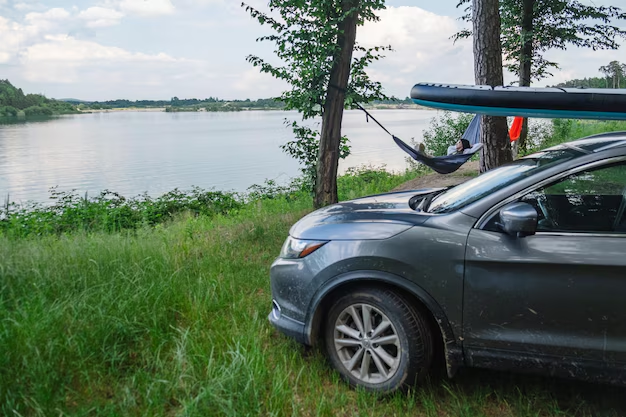Secure Your Kayak on the Road: The Ultimate Guide to Roof Rack Safety
Embarking on a kayaking adventure demands meticulous preparation, and ensuring your kayak is safely secured to your roof rack is critical. A securely fastened kayak means you can focus on your journey without the worry of mishaps on the road. Here’s a comprehensive guide to safely secure your kayak to a roof rack, ensuring peace of mind from start to finish.
Choose the Right Roof Rack
Before you hit the road, ensure you have the appropriate roof rack for your vehicle. Kayak racks come in various types, including J-cradles, saddles, and stackers. Each one is designed to cater to different kayak shapes and transportation needs. Check your vehicle’s compatibility and capacity before investing.
Gather Your Gear
You'll need the following gear, which is specifically designed to keep your kayak safe during transport:
- Cam buckle straps: These straps are crucial for securing the kayak. Avoid using ratchet straps, as they can be too tight and damage your kayak.
- Bow and stern lines: These lines keep the kayak from shifting side-to-side or front-to-back.
- Protective foam blocks or padding: To prevent scratching and add cushioning.
Load Your Kayak Properly
Position Your Kayak: Begin by placing the kayak next to your vehicle. Depending on your rack type, load the kayak hull-up or hull-down, keeping it lined up with the vehicle.
Lift Safely: Use proper lifting techniques. If your kayak's heavy, get a partner to help.
Position on the Rack: Ensure the kayak is centrally balanced over the crossbars. Place any foam pads to cushion and stabilize the kayak.
Secure With Straps
Loop Cam Buckle Straps: Throw straps over the kayak, looping each around corresponding roof rack bars. Tighten with the cam buckle, ensuring a snug fit without over-tightening.
Tie Down the Ends: Excess strap length should be tied off to prevent flapping in the wind.
Use Bow and Stern Lines
Attach Bow/Stern Lines: Secure these lines from the kayak’s ends to the vehicle’s front and rear undercarriage. This step minimizes movement at high speeds.
Check Tension: Ensure all lines are taut but not too tight, protecting against damage to the kayak or car.
Final Safety Checks
After everything’s tied down:
- Recheck Straps: Inspect the tension on straps and lines before departure.
- Gentle Tug & Pull: Test the kayak's firmness by giving it a gentle tug to confirm everything’s secure.
- Adhere to Speed Limits: Drive within speed limits, especially on highways, to minimize wind resistance and strain on the kayak.
Securing your kayak correctly not only protects your investment but ensures the safety of everyone on the road. Investing in quality equipment is just one aspect, but knowing how to use it correctly is crucial for a smooth experience.
While you're investing in outdoor gear, also consider other financial investments and assistance that can enhance your lifestyle. If you're saving for future adventures or seeking financial stability, multiple programs exist that can pave the way for achieving financial freedom.
📘 Financial & Educational Resources:
- 💸 Government Aid Programs: Explore subsidies and relief options for various needs.
- 📚 Educational Grants: Benefit from scholarships and grants to lessen educational costs.
- 💳 Credit Card Solutions: Opt for low-interest cards tailored to meet personal financial circumstances.
- 📈 Debt Relief Options: Consider consolidating loans for easier management of debt.
Navigating the financial world can be as daunting as a rapid-filled river, but with the right tools and knowledge, you can chart a course toward a secure future.
